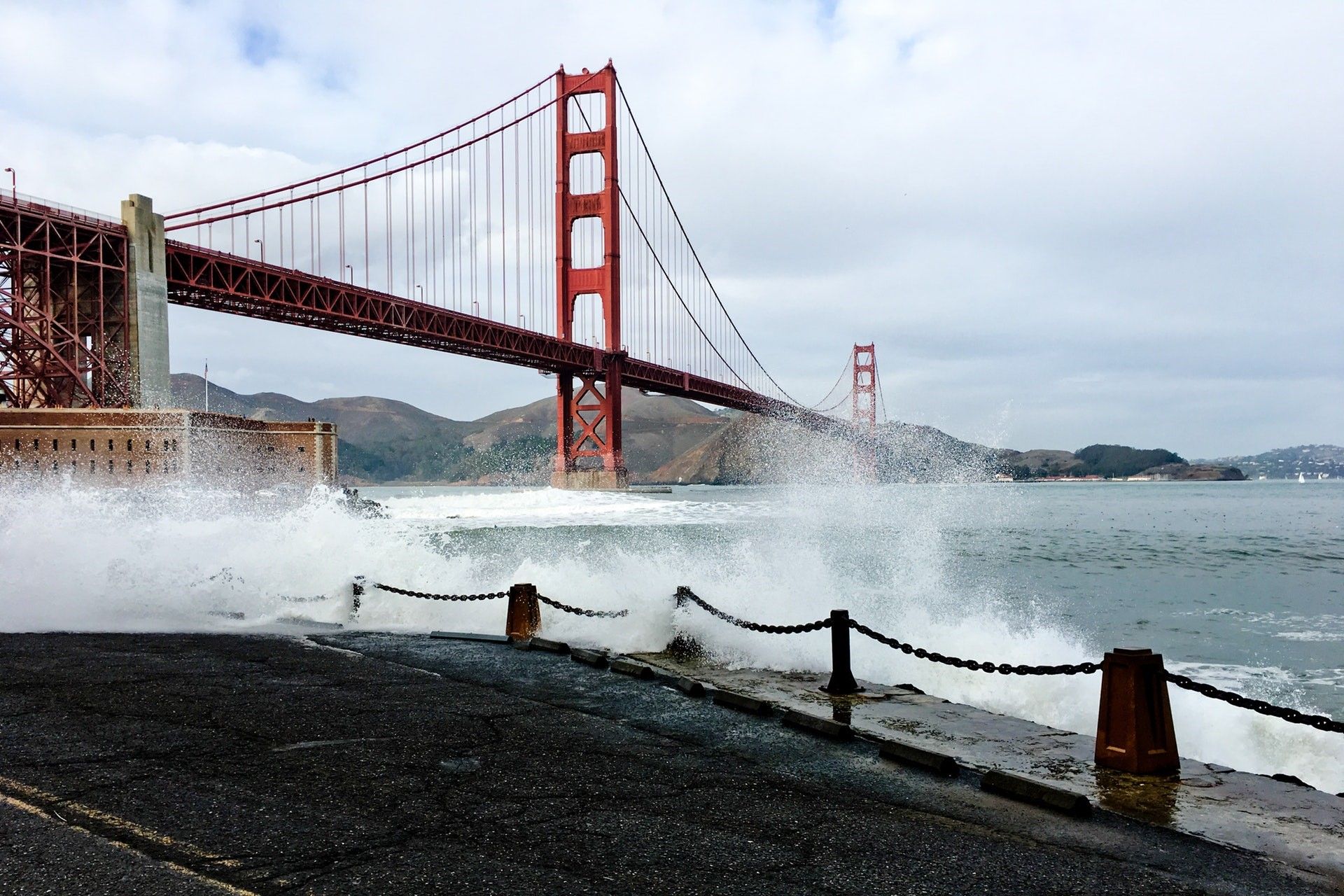
Article posted by
Once dubbed the ‘bridge that couldn’t be built’, there are few sights today more impressive, and more emblematic of the United States, than San Francisco’s Golden Gate Bridge. A feat of engineering that ranks as one of the ‘Seven Wonders of the Modern World’, as voted for by the American Society of Civil Engineers. To date, it has carried more than two billion cars across its 1.7 mile length.
However, the challenges to its construction went beyond the mere width of the span it was intended to cross, and its architects were forced to contend with a host of other difficulties both natural and manmade.
The Strait
The bridge crosses the Golden Gate Strait, a mile-wide channel in San Francisco Bay, through which flows about 60% of all the rain and snow that falls in California. It is this strait that is responsible for the area’s strong tides and treacherous waters, its gale force winds, as well as the infamous sea fog that frequently envelopes the city. As if that was not enough, the bridge’s location is in-between the San Andreas and Hayward fault lines, at the intersection of two active tectonic plates. Earthquakes have plagued the region since time immemorial.
Nevertheless, with the massive growth of San Francisco that began with the 1849 gold rush, the necessity of building a bridge that could connect the city with Marin County to the north was recognized as early as the 1870s. Yet it took a further 50 years before the first plans materialised, drawn up by pioneering structural engineer Joseph Strauss.
Revolutionary as they were, these initial designs were widely disliked, not only by city officials, who described them as ‘ugly’, but also by the powerful Southern Pacific Railroad Company, who operated the extremely profitable ferry service across the Strait. The quickest and most convenient way to cross, at their peak, the boats carried around 2.5m cars each year.
After defeating the more than 2,300 legal disputes brought by the ferry operators, the city enlisted the services of Leon Moisseiff, the leading suspension bridge engineer in the U.S., along with mathematician Charles Ellis to aid Strauss, and secured funding (during the Great Depression) of some $37m through a bond secured against the properties of San Francisco’s residents. Work finally got underway on January 5th 1933.
The Numbers
The build took four years, starting with the construction of the two towers. Each weighs around 22,000 metric tonnes, stands about 746ft high and support the entire weight of the bridge. The cables, measuring 3ft in diameter and made up of 27,572 steel wires, were hung between them and seated in the 150-tonne cradles on top. All told, there are nearly 80,000 miles of cable used.
Hanging from the main suspension lines, smaller vertical cables support steel trusses, onto which the concrete roadway was poured.
At the time, with the devastating economic collapse gripping America, the Golden Gate Bridge construction site was one of the country’s largest employers. With no shortage of labour, it was completed on 27th May 1937, the longest suspension bridge in the world — a title it held until 1964 and the opening of the Verrazano-Narrows Bridge in Lower New York Bay.

Protecting the Bridge
Of course, a project of the magnitude of the Golden Gate Bridge requires constant maintenance, and there is a team of 110 personnel who are assigned the duty of preserving the structure full time.
The oceanic climate means corrosion is a key factor and the crew is charged with painting and repainting the bridge in sections, using the official shade of ‘International Orange’, the same as on American footballs.
They are also responsible for replacing any of the 600,000 rivets in the towers and, due to the nature of the construction, only two can be removed at any one time to ensure the bridge’s integrity.
Major works have taken place over the years as well. Shock absorbers were fitted at each end of the bridge to soak up the energy from wind or earthquake forces, and the entire suspension cable system was replaced in the 70s, with a new, lighter road deck being added in the 80s.
More than 112,000 cars cross the bridge every day, with the speed limit of 45mph strictly enforced. To date, it has only been closed three times in its 80-year history, all due to especially poor weather.
The Legacy
The ‘impossible’ bridge is an undoubted engineering marvel, an iconic symbol of the city of San Francisco and of the United States as a whole. The result of incredible imagination and resolve, built in a time of massive financial hardship, the bridge remains an achievement of which the entire country can be rightfully proud.
We’re here if you need help defining a role or brief, specialist insight to help shape your ideas or expert help with your recruitment process. Just get in touch to arrange a conversation with one of the team or if you’re ready for us to find the perfect person for you, send us your brief.
If you’re looking for your ideal job send your CV to us to get started or search for the latest job vacancies and we’ll get the ball rolling.